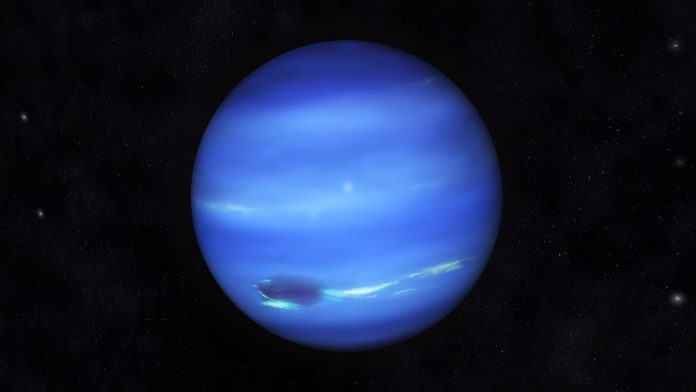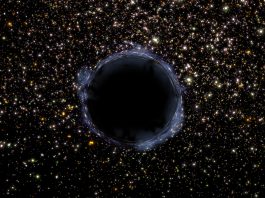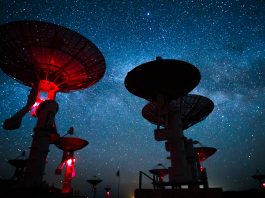Astronomers, led by the University of California at Berkeley, USA, have used NASA’s Hubble Space Telescope to observe a mysterious dark vortex on Neptune, which has abruptly steered away from a likely death.
The storm, which is wider than the Atlantic Ocean, was born in the planet’s northern hemisphere and discovered by NASA’s Hubble Space Telescope in 2018. Observations a year later showed that it began drifting southward toward the equator, where such storms are expected to vanish from sight. Hubble spotted the vortex change direction in August 2020, doubling back to the north. Though Hubble has tracked similar dark spots over the past 30 years, this unpredictable atmospheric behaviour is something new to see.
Neptune’s dark vortices are high-pressure systems that can form at mid-latitudes and may then migrate toward the equator. At birth, they remain stable due to Coriolis forces, which cause northern hemisphere storms to rotate clockwise, due to the planet’s rotation. However, as a storm drifts toward the equator, the Coriolis effect weakens, and the storm disintegrates. In computer simulations by several different teams, these storms follow a more-or-less straight path to the equator, until there is no Coriolis effect to hold them together. Unlike the simulations, the latest giant storm did not migrate into the equatorial kill zone.
A smaller vortex may have drifted away from the storm
Hubble spotted another, smaller dark spot in January this year that temporarily appeared near its larger cousin. Informally named ‘Dark Spot Jr’ It might possibly have been a piece of the giant vortex that broke off, drifted away, and then disappeared in subsequent observations.
Michael H Wong of the University of California at Berkeley said: “We are excited about these observations because this smaller dark fragment is potentially part of the dark spot’s disruption process. This is a process that’s never been observed. We have seen some other dark spots fading away, and they’re gone, but we’ve never seen anything disrupt, even though it’s predicted in computer simulations.”
The Hubble observations also revealed that the dark vortex’s puzzling path reversal occurred at the same time that a new spot appeared. It was near the side of the main dark spot that faces the equator – the location that some simulations show a disruption would occur. The timing of the smaller spot’s emergence was unusual, Wong added: “When I first saw the small spot, I thought the bigger one was being disrupted. I didn’t think another vortex was forming because the small one is farther towards the equator. So it’s within this unstable region. But we can’t prove the two are related. It remains a complete mystery.”









